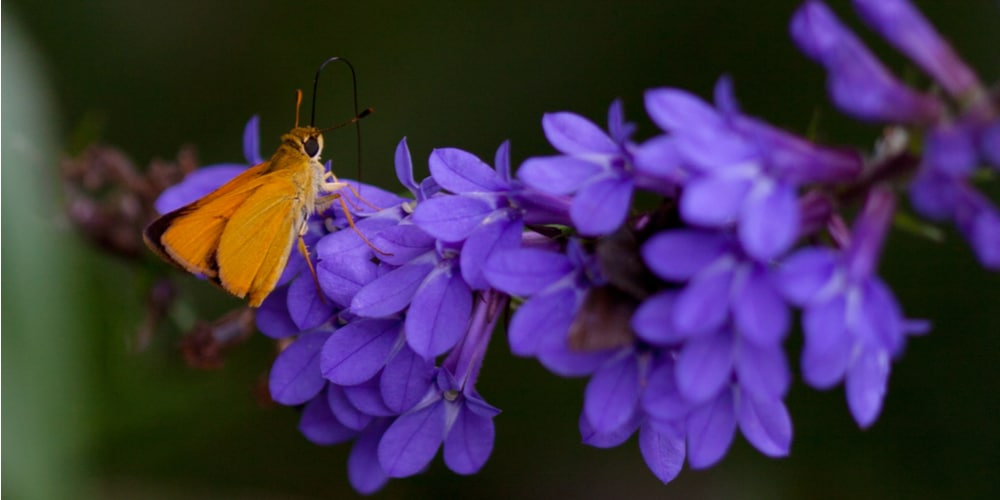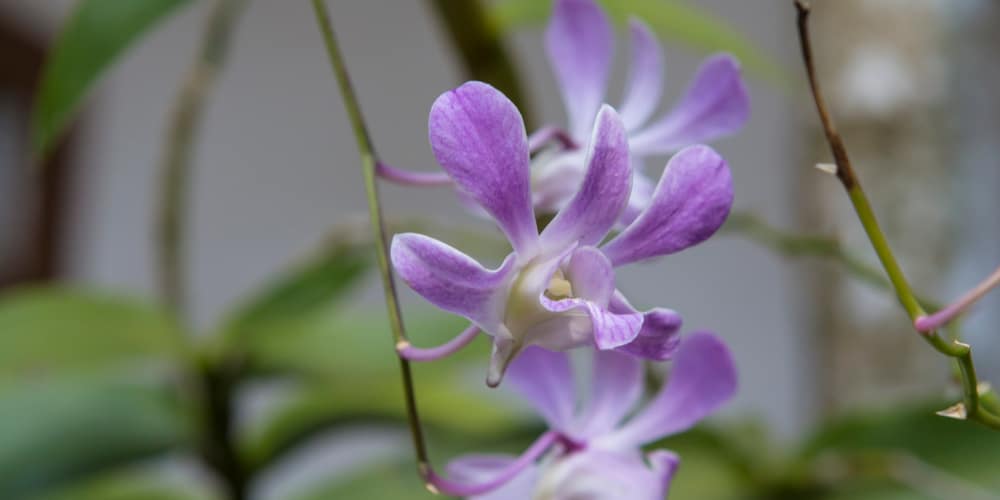Commonly known as Downy Lobelia, the lobelia puberula is one of the most overlooked garden flowers. This is quite surprising, especially when considering how famous its cousins, the Great Blue Lobelia and Cardinal Flower are amongst gardeners.
Even though the lobelia puberula isn’t as famous as other native lobelias, it is an excellent addition to your garden. Not only does it stand out with its irregularly spaced leaves, but it’s an excellent pollinator. With this flower in your garden, it will always be an attraction site for the lovely but noisy hummingbirds and colorful butterflies. Characterized by a plant hardiness rating of 4-9, this is a flower that won’t require much attention when planted in your garden.
Are you considering introducing lobelia puberula in your garden? This article will cover everything you need to know about Lobelia Puberula care.
What You Need to Know about the Lobelia Puberula

- Scientific Name – Lobelia puberula
- Plant Type – Perennial
- Sun Requirements – Full sun to partial shade
- USDA Hardiness Zones – 4-9
- Soil PH Range – 6-7.5
- Soil Type – Slightly acidic, evenly moist and well-drained
- Water Needs – Medium/Average
The Downy Lobelia is an attractive plant. It is a perennial herbaceous wildflower that grows in the Eastern and South-Central parts of the US. It can grow to a height of three to four feet. The lobelia puberula has irregularly spaced leaves with small teeth and a frizzy underside. In late summer to mid-fall, you will spot blue flowers with pink-white centers. The blooms feature a white mark, unlike in the case of the Great Blue lobelia that has two.
Another fascinating thing about Downy lobelia flowers is that they mostly grow on one side. The flowers have two flaring lips. The lower lip features three lobes, and the upper one has got two.
This plant is the most common blue lobelia in the southeast of the US. It is mildly poisonous to humans. It can be toxic when consumed in large quantities. From the roots to the leaves, the entire plant contains lobeline, which is toxic. Do not eat any part of the lobelia puberula. It would be best to prevent your pets from doing the same.
Heading over to other characteristics of the lobelia puberula, you should know that this plant can survive relatively hardy conditions. For instance, it can grow in the sun. Secondly, it can thrive on wet and dry soil. While we are still on soil, you can plant the Downy lobelia on clay, sand, or even loam.
Being a plant that belongs to the lobelia family, it is categorized as a short-lived perennial. However, the lobelia puberula produces a lot of seeds, which can ensure this plant never becomes extinct in your garden. As long as you don’t mulch the ground heavily, you don’t have to worry about the population of Downy Lobelia plants.
If you crave a colorful garden, you should grow the Downy lobelia alongside other members of the lobelia family, such as the Great Blue and Cardinal flower. You can also spice things up by adding some Goldenrods and Mistflower.
Lobelia Puberula Care
As mentioned earlier, this plant doesn’t need special care. However, if you want it to do well, here are some tips that will ensure the Downy lobelia thrives in your garden.
Light
Being a flower like the rest, the lobelia puberula requires adequate sunlight. If you live in a cool environment, ensure that it gets at least six hours of sunlight. It can tolerate some shade but on a partial basis. If you intend on growing this flower as a houseplant, place it near a window where it will get enough light. To ensure light is distributed evenly over the entire plant body, you can rotate it occasionally though this isn’t mandatory.
Water and Soil Needs
This plant requires an average amount of water. Remember to water it regularly but do not overdo it. You can do this once every week if you want the roots to grow much deeper into the soil. Because the temperatures differ from one place to another, always ensure the ground at least an inch deep into the soil is damp.
Moving on to soil, this plant thrives better in moist soils, but it can also tolerate dry soil. Regarding soil type, you can grow the Downy lobelia on clay, loam, and sandy soil. It should withstand a soil pH ranging from 6 to 7.5.
Temperature Requirements
As mentioned earlier, the Downy Lobelia has a hardiness rating of 4 to 9. It can grow in USDA climate zone 4a to 9b, which translates into a temperature of -30°F to 25°F. This shows that this plant can be grown in many places with different climatic conditions.
Fertilizer
The best fertilizer for the lobelia puberula is the 10-10-10 fertilizer. This comprises 10% nitrogen, 10% phosphate, and 10% potash. This is an all-purpose fertilizer that should provide the soil with the required nutrients for Downy lobelia growth. All plants in the lobelia family prefer soil rich in organic soil, so adding a humus layer can promote healthy growth.
Common Diseases
Fungi common in wet soil can lead to various lobelia puberula diseases. Examples include Basal, a condition whereby the roots and stems turn brown due to rotting. Wireworms can also hurt lobelia by destroying the roots. Always inspect and treat your garden for fungi and harmful bugs such as wireworms.
Propagation
Propagating Downy lobelia comes with many benefits. It’s a cost-effective method to ensure these plants always grow in your garden every year. Plus, you are assured of a continuous supply of lobelia puberula.
There are two ways how you can propagate the lobelia puberula. Both are reasonably easy, and we will list each so that you can choose which suits you the most.
1. The first method entails cutting a six-inch section in the lobelia puberula stem with two leaves. This should be done when the flowers haven’t developed from buds. You should then cut the upper leaf in half and remove the lower one. On the cut end of the stem, dip it in a rooting hormone and shake it thoroughly. This should remove excess hormones from the propagated leaf. Before planting the cut stem, saturate the soil and drain it completely. It’s important to plant it as deep as you can. Cover it with a plastic bag so that the temperatures range from seventy to eighty degrees F. Water the soil till roots start to grow in three weeks.
2. The other method entails propagating the lobelia puberula in late spring. You should cut about 5 inches of newly grown stems. Get rid of all the leaves and plant them in the soil. Water the cuts regularly, and they should develop roots in a few weeks.
Both methods are effective at propagating lobelia puberula. Give each a try and see which will work best for you.
Lobelia Puberula Care: The Bottom Line
The lobelia puberula is an appealing and carefree flowering plant. Besides its elegant look, it’s straightforward to grow and maintain. With the option to propagate the Downy Lobelia, there is no reason why you shouldn’t have this plant in your garden. It can be grown both indoors and outdoors, as long as you provide it with sufficient light. With the above guide on caring for lobelia puberula, you should have an easy time growing these flowers.
Related Article: Do Deer Like Lobelia Plants?
